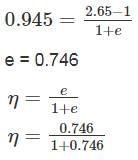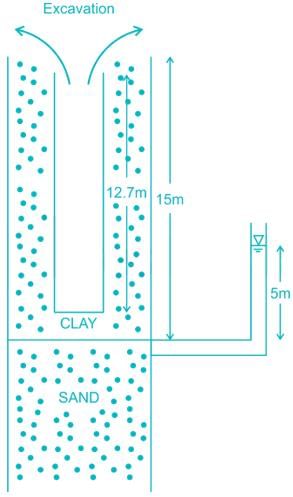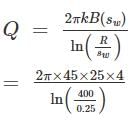Test: Soil Mechanics- 4 - Civil Engineering (CE) MCQ
10 Questions MCQ Test GATE Civil Engineering (CE) 2025 Mock Test Series - Test: Soil Mechanics- 4
Consider the following statement with regard to prevention of formation of Quick sand Condition in the field?
A. By lowering of the water table at the site before excavation at the excavation location
B. By providing a sheet pile wall so as to decrease the upward flow length
C. Application of surcharge (i.e. additional weight on the excavation side to increase the net weight of the soil mass.
Identify the correct statements:
Calculate the saturated unit weight (kN/m3) of the soil sample for the Quick sand condition, if specify Gravity and void ratio of soil sample is 2.62 and 0.61 respectively. Take γW = 10 kN/m3
A series of wells were dug in a confined aquifer. The surface obtained by connecting the static water levels would be called:
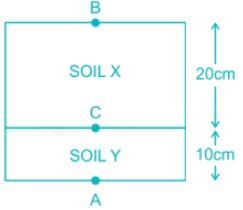
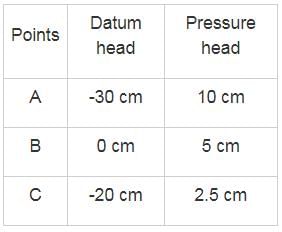
Permeability of soil X is 3 × 10-4 cm/sec. What will be the permeability of Soil Y. Area of the cross-section for both the soil is the same.
An aquifer confined at top and bottom by impervious layers is stratified into three layers as follows:
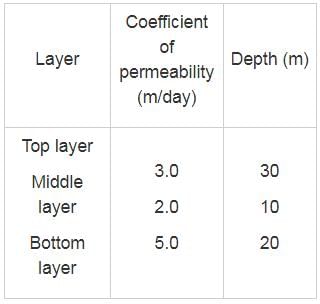
The transmissibility of the aquifer in m2/day is
Previous sand having air content 15% is used in the foundation of a masonry dam. If the maximum permissible upward gradient for a factor of safety of 3 against boiling is 0.315. The percentage of air voids in the previous sand will be ______ %.
15 metres of thick saturated clay is underlain by the sand layer and the sand layer is under artesian pressure equivalent to 5 metres head of water. Excavation is started and is it done up to 12.7 metres of depth in the clay layer at which the bottom heaves. For this much excavation depth in the clay. How much-saturated unit weight of clay you expect such that bottom will not heaves?
A 50 cm well completely penetrates an artesian aquifer. The length of the strainer is 25m. Determine the discharge (in lph) from the well, when the drawdown in the pumping well is 4 m. The K of the aquifer is 45 m/day. At a radial distance of 400 m from center of well, drawdown is zero.
|
31 docs|280 tests
|



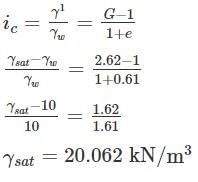
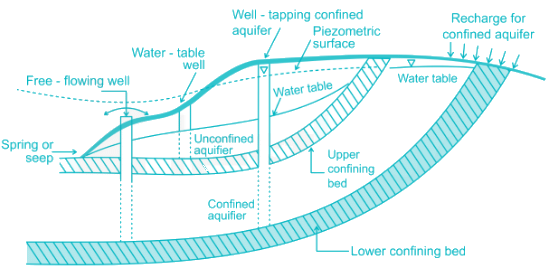
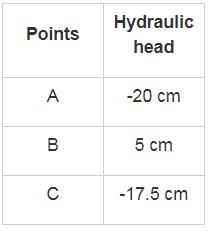

 3.5m/day
3.5m/day

